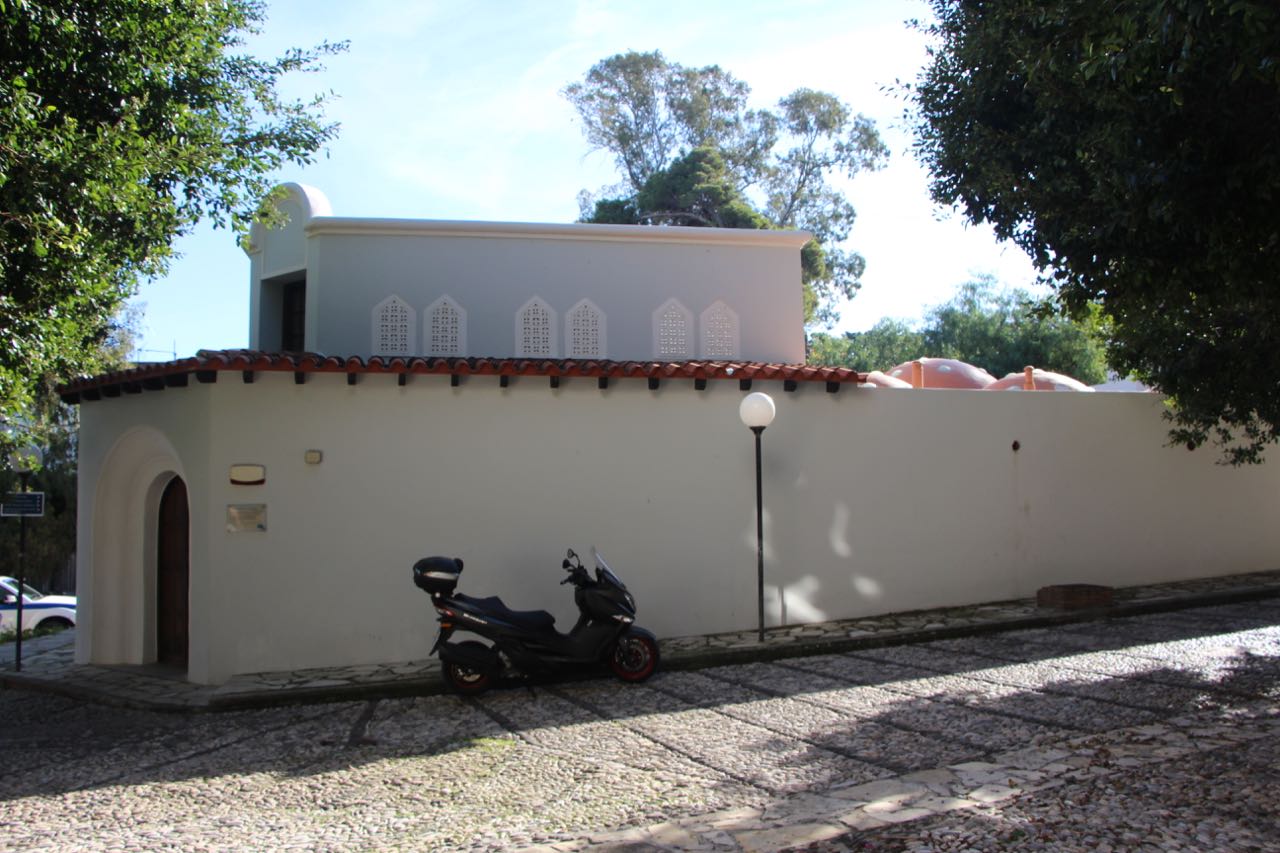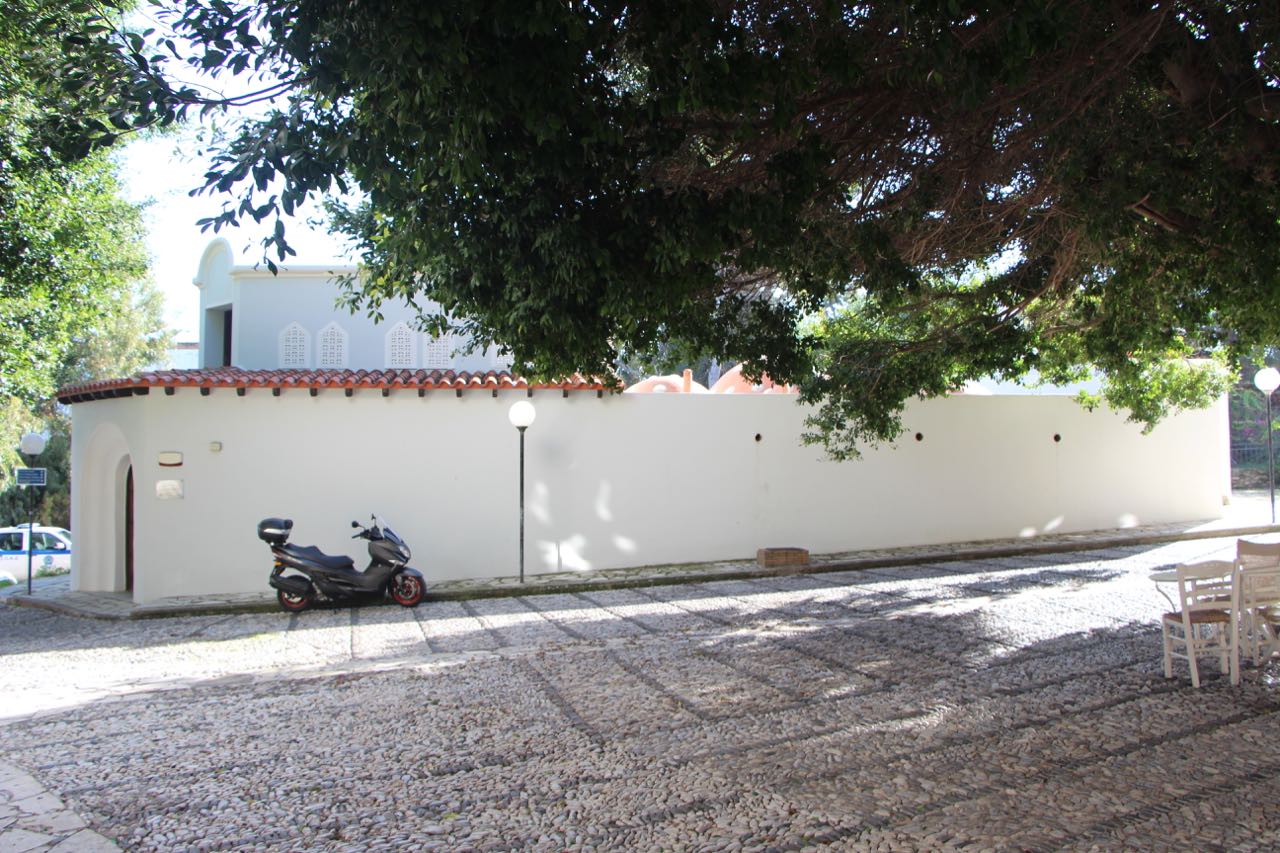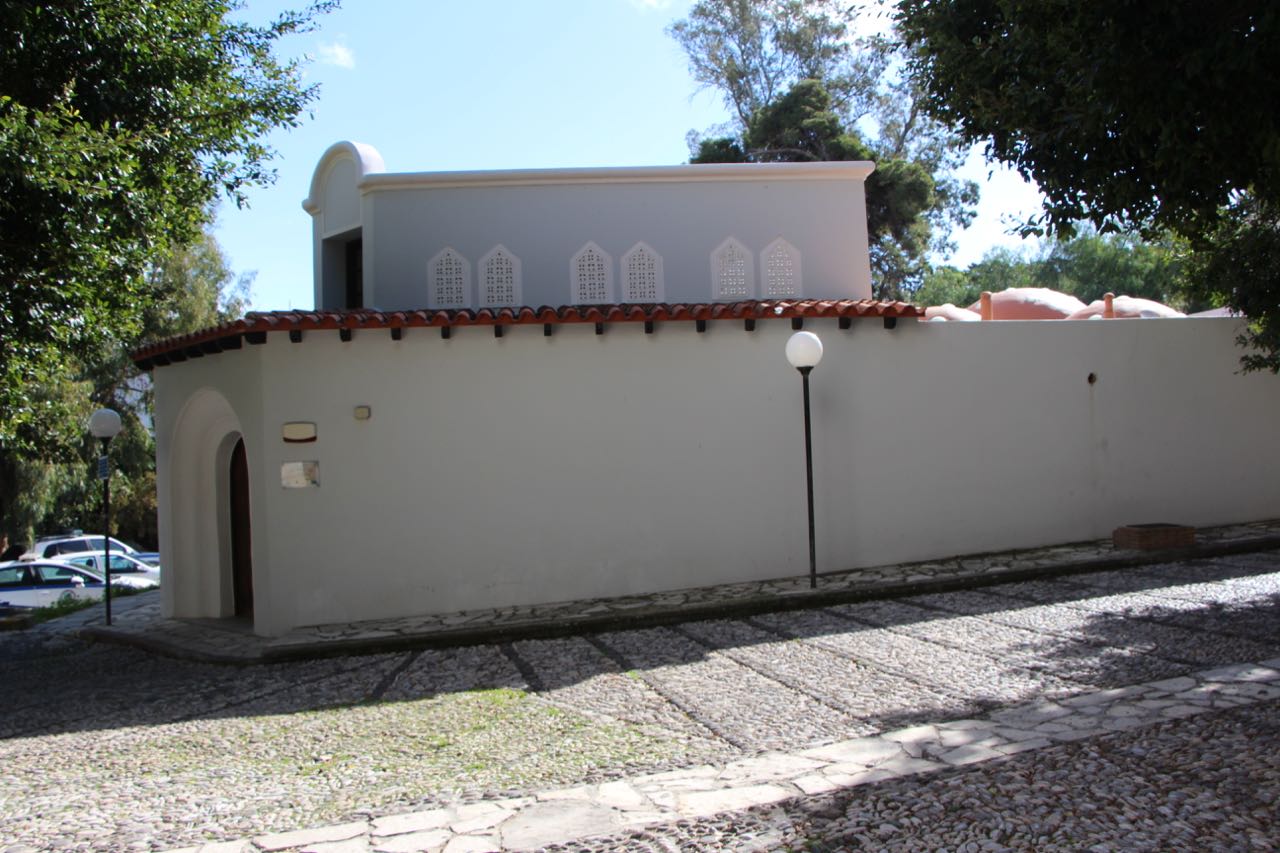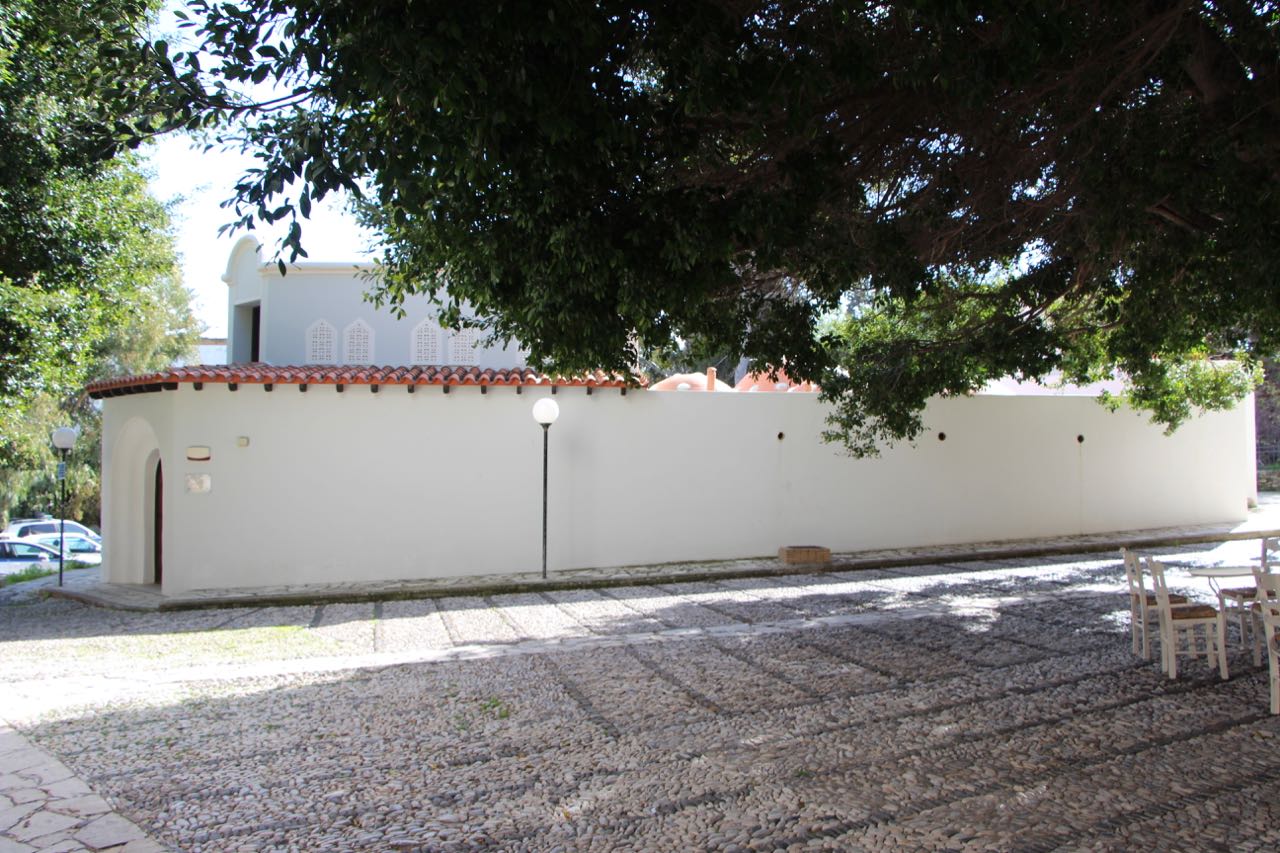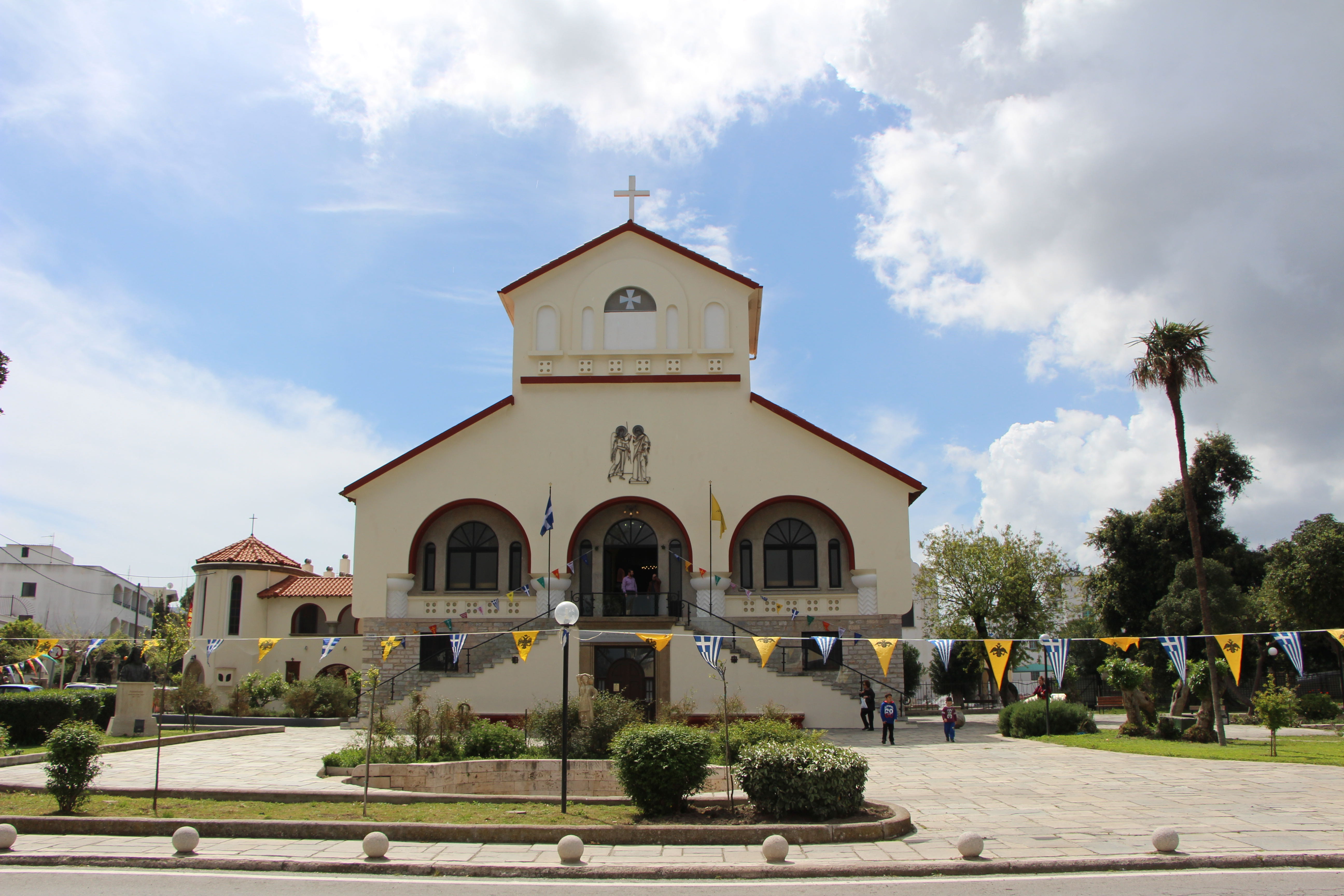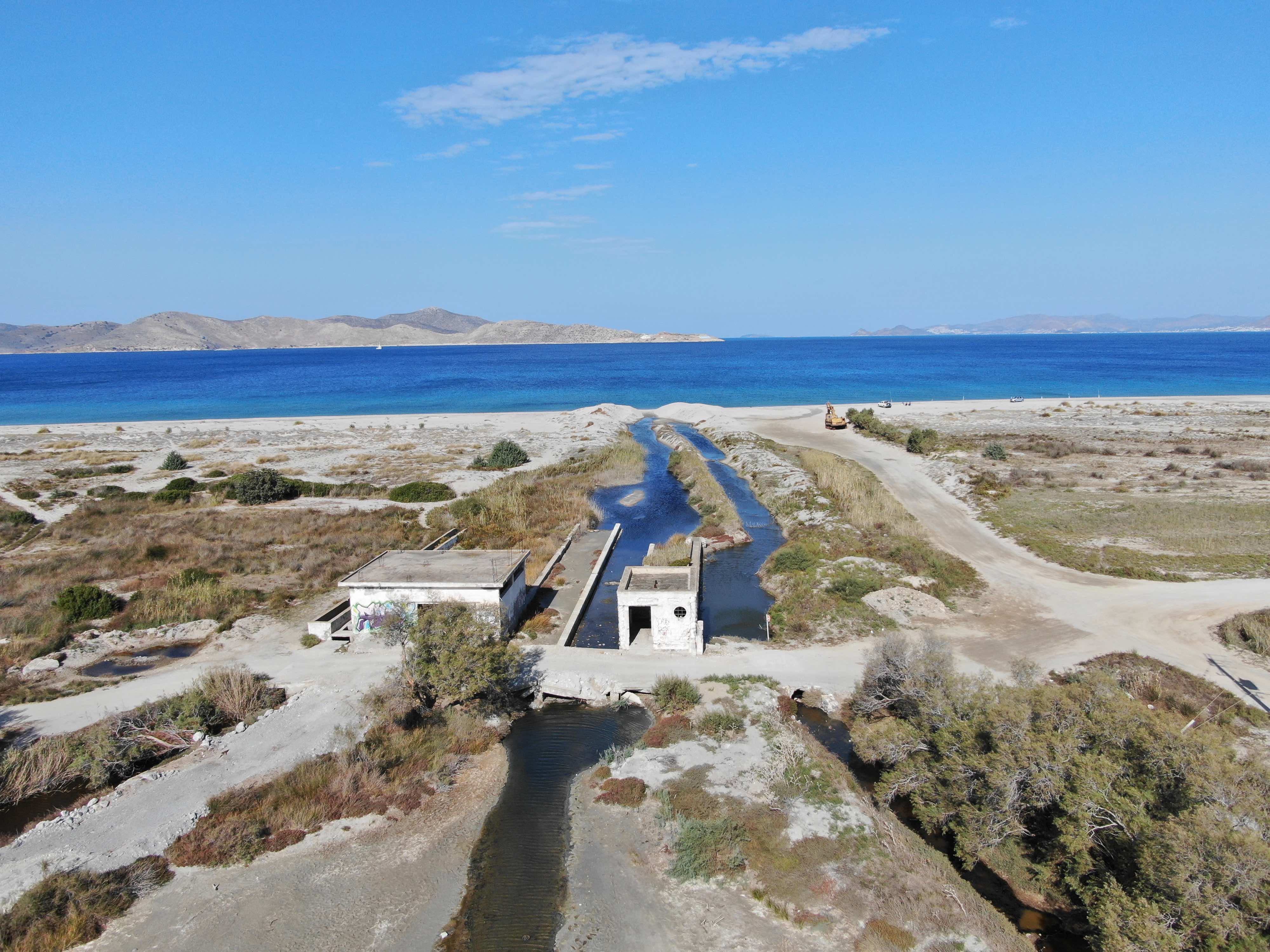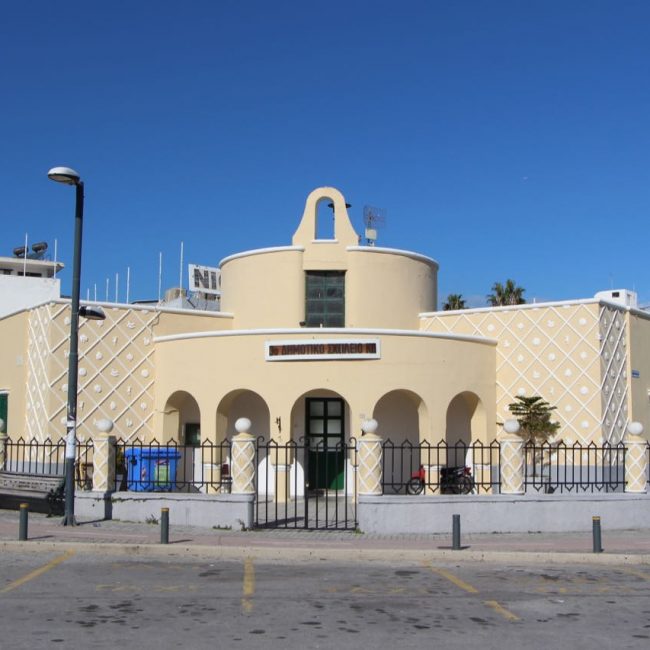The building known as the salt warehouse was used as a medium-sized mixed sex hamam (public bath). The year of construction is unknown, because of the interventions on the building, made during the period of the Italian occupation. The first information about the existence of this building was from the travel logue of a Turkish traveller, Elvia Tselepi (1668-1671). It was built probably in the mid 1600.
After the earthquake of 1933, the Italians rebuilt the entrance area and changed the facilities using modern materials and architectural style, appropriate to the style of the interwar period in the Dodecanese (eclecticism).
The spatial arrangement of the premises and their function were identical to those of the Roman baths. From the changing rooms, the bather first entered the warm room and then the hotter areas, allowing his body the gradual acclimatisation to high temperatures. In the central area there was a podium for grooming by the hamam masseur. All areas were roofed with hemispherical or semi-cylindrical vaults with small light holes covered by crystals, giving a soft, ambient lighting. The hamam operated as public baths until after the period of the Dodecanese integration into Greece in 1948.
In the 1990s, the hamam was used as a salt storage site by the Greek Monopoly because of its proximity to the port. It owes its current name (salt warehouse) to this latter use.
The building was designated as a historical heritage site and was restored in the 2000s, with a view to becoming a museum itself, but also a showroom





